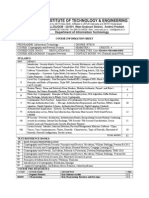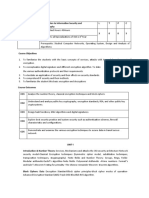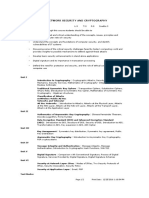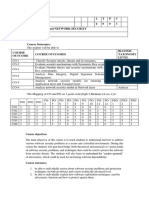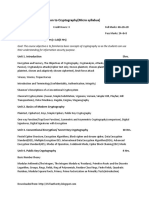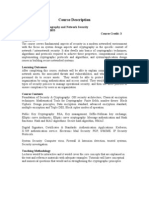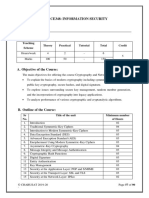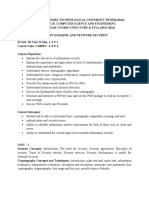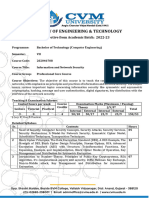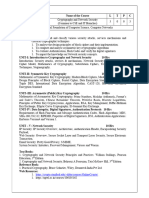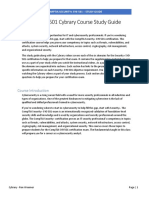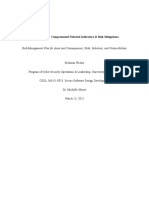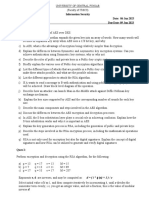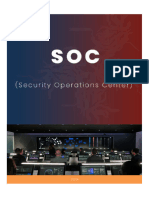0% found this document useful (0 votes)
161 views3 pagesCryptography and Network Security-Syllabus
The document outlines the course structure for 'Cryptography and Network Security' (Course Code 22CS62), detailing learning outcomes, course contents divided into five units, textbooks, reference materials, assessment methods, and teaching pedagogy. Students will learn about cryptographic techniques, security protocols, and practical applications through lectures and case studies. The course includes continuous internal evaluations and a semester-end examination, with a total of 39 teaching hours and 3 credits.
Uploaded by
shakshi yadavCopyright
© © All Rights Reserved
We take content rights seriously. If you suspect this is your content, claim it here.
Available Formats
Download as DOCX, PDF, TXT or read online on Scribd
0% found this document useful (0 votes)
161 views3 pagesCryptography and Network Security-Syllabus
The document outlines the course structure for 'Cryptography and Network Security' (Course Code 22CS62), detailing learning outcomes, course contents divided into five units, textbooks, reference materials, assessment methods, and teaching pedagogy. Students will learn about cryptographic techniques, security protocols, and practical applications through lectures and case studies. The course includes continuous internal evaluations and a semester-end examination, with a total of 39 teaching hours and 3 credits.
Uploaded by
shakshi yadavCopyright
© © All Rights Reserved
We take content rights seriously. If you suspect this is your content, claim it here.
Available Formats
Download as DOCX, PDF, TXT or read online on Scribd
/ 3






